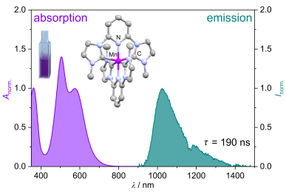'Green chemistry' to quantify the components of cosmetics
A UPV/EHU-University of the Basque Country researcher has developed and applied three methods to analyze various compounds in cosmetics
Advertisement
Cosmetics is an important industry worldwide and has attained high levels of sophistication. There are over 10,000 components that can be used to make cosmetics; so it is essential to monitor these components to guarantee consumer safety. Regulation 1223/2009 approved by the European Union in 2009 established a list of components that guarantee consumer safety as well as certain conditions for using these components, such as maximum concentration and what type of products they can be used in. In his Ph.D. thesis, the researcher Josu López of the Department of Applied Chemistry of the UPV/EHU's Faculty of Chemistry has developed and applied methods to quantify some of these components. The methods studied by López are based on capillary electrophoresis. As the researcher explained, 'one of the most important advantages of this technique is that it is a 'green' technique because little organic solvent is used and little residue is produced in comparison with other analytical techniques'. López has worked on methods to analyse musk fragrances, allergens, antimicrobial preservatives, antioxidant preservatives and ultraviolet filters, and has applied them in the analysis of various perfumes, shampoos, gels, soaps, sun creams and a range of domestic products. As the researcher pointed out, 'all the products we analysed comply with the regulation'.
Cheap, simple, 'green' methods Lopez explained that it is very easy to prepare the samples to be used in these methods - all you have to do is dilute the product - and what is more, they are cheap methods. So they are a good alternative with respect to the methods used until now (liquid and gas chromatography). It should also be pointed out that one of the advances is that the simultaneous separation of various components has been achieved using capillary electrophoresis, for example it is possible to simultaneously separate fragrances and allergens, or preservatives and ultraviolet filters, etc. The researcher highlighted the importance of the optimisation process of the methods obtained. 'We have developed a function to simplify the optimisation of the most significant variables that have a bearing on the methods,' he explained. The next step will now be to try and simultaneously analyse a larger quantity of components, and to try and reduce the minimum concentration for detection purposes in the methods.
Original publication
J. Lopez-Gazpio, et al. "Application of response function methodology for the simultaneous determination of potential fragrance allergens and preservatives in personal care products using micellar electrokinetic chromatography"; Analytical and Bioanalytical Chemistry, 2014.
J. Lopez-Gazpio, R. Garcia-Arrona, E. Millán. "Simultaneous determination of multiclass preservatives including isothiazolinones and benzophenone - type UV - filters in household and personal care products by micellar electrokinetic chromatography.", Electrophoresis, 2015.
































































